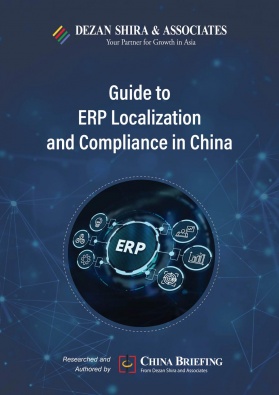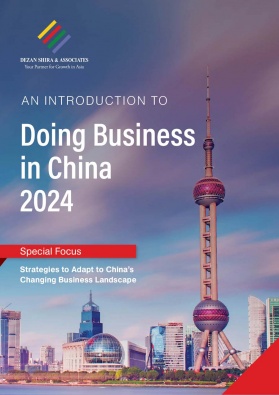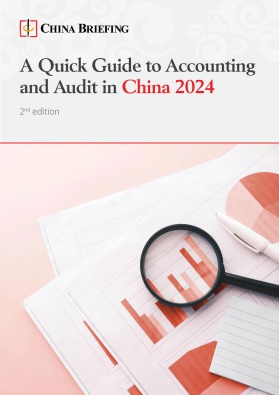China-Serbia Bilateral Relations: Trade and Investment Outlook
China and Serbia share a close partnership, symbolized by their enduring “iron friendship”. Serbia is also the first European nation to embrace the concept of a “community of shared future” with China, reinforcing their bond and mutual aspirations for a harmonious global landscape.
UPDATE (June 28, 2024): The Customs Tariff Commission of the State Council released an announcement on June 27, 2024, regarding the application of agreed tax rates for certain goods originating in Serbia. As a result of negotiations between China and Serbia, the Free Trade Agreement (FTA) between the two countries will take effect on July 1, 2024. According to the announcement, China will apply the agreed tax rates to eligible goods from Serbia starting from the effective date.
In recent years, China and Serbia have significantly strengthened their relationship, enhancing both economic and political ties. Often referred to as an “iron friendship,” this close partnership has made China a key ally for Serbia. Highlighting their deepening ties, Serbia became the first European country to agree to build a “community of shared future” with China, reflecting their growing collaboration.
China’s substantial investments in Serbia, particularly in mining, infrastructure, and strategic partnerships, underscore its crucial role in Serbia’s development. In return, Serbia serves as a vital entry point for China’s Belt and Road Initiative in Europe, boosting China’s influence in the region.
In this article, we discuss the latest data on bilateral trade and investment between China and Serbia. Additionally, we provide an overview of the various tax and investment treaties signed by the two countries, offering insights into the legal framework that underpins their economic relationship.
China-Serbia relations
China and Serbia have enjoyed a longstanding diplomatic relationship, dating back to 1955 when China established diplomatic ties with Yugoslavia, Serbia’s predecessor. Following the dissolution of Yugoslavia, the Chinese Embassy in former Yugoslavia was renamed the Chinese Embassy in Serbia and Montenegro in 2003, and then the Chinese Embassy in the Republic of Serbia in 2006.
The partnership between the two nations deepened over time, culminating in the establishment of a strategic partnership in 2009. In the following years, the bilateral relationship continued to strengthen, as evidenced by the signing of the Joint Statement on Deepening Strategic Partnership between the People’s Republic of China and the Republic of Serbia in 2013, and of the Joint Statement on the Establishment of Comprehensive Strategic Partnership between the People’s Republic of China and the Republic of Serbia in 2016.
Recent developments
During a meeting in February 2022, Chinese President Xi Jinping emphasized the enduring “iron-clad friendship” between the two nations highlighting the robust mutual political trust that has withstood the test of time, particularly through the challenges posed by the COVID-19 pandemic.
On October 17, 2023, President Xi and Serbian President Aleksandar Vučić met in Beijing for the third Belt and Road Forum for International Cooperation. On this occasion, they celebrated the signing of several key bilateral agreements, including a historic Free Trade Agreement (FTA). This agreement aims to boost trade and collaboration in sectors such as automotive, technology, agriculture, and commodities. As the first FTA between China and a Central and Eastern European nation, it makes Serbia China’s 29th FTA partner. By eliminating tariffs on many goods, the agreement is expected to significantly impact European and Eurasian trade dynamics, highlighting their commitment to mutually beneficial relations. The FTA negotiations, completed in just five months, reflect the high level of political trust between the two countries.
While signing the Free Trade Agreement is perceived as a major event, Serbia is only seeing this as a first step in deepening the relationship between the two countries, as China has committed to support Serbia in hosting Expo 2027 and increase imports of high-quality agricultural products from Serbia, including dried plums and blueberries. Lastly, China will facilitate the training of young Serbian scientists over the next three years and provide further educational opportunities in China, while encouraging airlines to open direct flights from Belgrade to Guangzhou. – Radomir Tomovic, Manager, International Business Advisory in Hong Kong, Dezan Shira & Associates.
During his most recent trip to Europe in May 2024, President Xi met with President Vučić in Belgrade, where they agreed to follow a “shared future” as they signed 29 agreements to enhance legal, regulatory, and economic cooperation. The visit carried symbolic significance, occurring on the anniversary of the 1999 NATO bombing of the Chinese Embassy in Belgrade. Additionally, both leaders reaffirmed their support for each other’s sovereignty and territorial integrity, highlighting their alignment on key geopolitical issues.
Bilateral trade between China and Serbia
Serbia is China’s foremost trading partner in Central and Eastern Europe, while China holds the position of being Serbia’s key trading partner in Asia. In 2023, bilateral trade volume surged to US$4.35 billion. The recently concluded China-Serbia FTA is expected to further enhance the liberalization of goods trade, fostering mutual benefits and win-win outcomes.
Notably, the agreement extends beyond agricultural products to encompass various sectors such as iron, steel, machinery, pharmaceuticals, and cosmetics, further enhancing the breadth of bilateral economic cooperation.
According to the United Nations COMTRADE database, Serbia exports to China reached US$124 billion in 2023, with top exported goods being ores slag and ash (US$842.59 million), copper (US$301.04 million), wood and related articles (US$36.28 million), electronic equipment (US$19.76 million), and machinery, nuclear reactors, and boilers (US$17.24 million).
| Top 5 Products Exported from Serbia to China in 2023 | |
| Product category | Amount (million US$) |
| Ores slag and ash | 842.59 |
| Copper | 301.04 |
| Wood and articles of wood, wood charcoal | 36.28 |
| Electrical, electronic equipment | 19.76 |
| Machinery, nuclear reactors, boilers | 17.24 |
| Source: United Nations COMTRADE, 2024 | |
Meanwhile, China’s export to Serbia in 2023 was US$2.7 billion, with machinery, nuclear reactors, and boilers (US$811.86 million), electronic equipment (US$650.30 million), articles of iron or steel (US$156.84 million), vehicles other than railway and tramway (US$120.95 million), and plastics (US$86.43 million) being the top exported goods.
| Top 5 Products Exported from China to Serbia in 2023 | |
| Product category | Amount (million US$) |
| Machinery, nuclear reactors, boilers | 811.86 |
| Electronical, electronic equipment | 650.30 |
| Articles of iron or steel | 156.84 |
| Vehicles (other than railway, tramway) | 120.95 |
| Plastics | 86.43 |
| Source: United Nations COMTRADE, 2024 | |
China’s investment in Serbia
Serbia has become a pivotal hub for Chinese influence not just within the Western Balkans but also across Central and Eastern Europe, positioning China as the primary investor in the nation. By 2022, China had emerged as Serbia’s largest source of foreign direct investment (FDI), surpassing the combined investments of all 27 European Union member states, underscoring the depth and complexity of their bilateral involvement.
Infrastructure
Serbia, as an active participant in the Belt and Road Initiative (BRI), has seen substantial engagement from China, fostering an environment of strategic cooperation and infrastructure development. The Memorandum of Understanding on Jointly Advancing the Belt and Road Initiative (2019) and the Plan for Bilateral Cooperation under the Framework of the Belt and Road Initiative (2018) solidified the foundations of this collaborative effort.
Notably, Serbia is also a key participant in the “16+1” initiative, also known as the Cooperation between China and Central and Eastern European Countries (China-CECC Cooperation). Within this framework, Serbia has emerged as the largest beneficiary of approximately 70 percent of Chinese investment in the region, totaling US$10.3 billion between 2009 and 2021.
A large majority of Chinese investment in Serbia has been channeled into essential infrastructure projects. Since the signing of the Economic and Technical Cooperation Agreement in the Field of Infrastructure in 2009, China has actively participated in various key projects within the transport and energy sectors. Notable initiatives include the construction of the iconic “Pupin Bridge” in Belgrade, financed primarily by the Export Import Bank of China (Exim Bank of China).
The modernization of the Kostolac thermal energy power plant, funded by the Exim Bank of China and implemented by China Machinery Engineering Corporation (CMEC), stands as another significant project in the energy sector. China has also been involved in the construction of essential segments of the Corridor XI motorway, partially financed by Exim Bank of China and executed by China Road and Bridge Corporation (CRBC). Another significant contribution is the modernization and development of the high-speed railway connecting Belgrade and Budapest, partially financed by Exim Bank of China and reconstructed by China Communications Construction Company (CCCC) and China Railway International Group (CRI).
Mining and automotive
In 2022, China’s Ministry of Commerce (MOFCOM) released the Country Guidelines for Foreign Investment and Cooperation, highlighting the significance of Chinese investment in Serbia’s mining and metal manufacturing sectors. Investments in these sectors have taken various forms, including brownfield acquisitions and greenfield projects. The Smederevo Steel Mill and Bor mines are prominent examples of brownfield acquisitions by Chinese investors. Simultaneously, the Čukaru Peki project represents a notable greenfield investment.
In September 2023, China’s Zijin Mining confirmed its intention to invest US$3.8 billion in the Lower Zone of Serbia’s Cukaru Peki Mine – an investment which is expected to place Serbia among the largest European producers of copper and gold. Serbia’s automotive sector has become another focal point for Chinese ODI. Prominent investments in this sector include the Linglong vehicle tire factory, the Minth Automotive Europe project in Western Serbia, and Mei Ta Europe’s investment in the Obrenovac Municipality. Additionally, Yanfeng Automotive Interiors and Xingyu Automotive Systems have made substantial contributions, with initiatives in Kragujevac and investments estimated between €50 million (US$52.88 million) and €60 million (US$63.46 million), respectively.
The increase in Chinese corporate involvement in Serbia’s automotive sector can be attributed to various factors. A key driver is the Serbian government’s offer of substantial subsidies and incentives to attract foreign investors. Apart from Chinese companies, Serbia’s automotive industry has also attracted interest from firms in Germany, Italy, Japan, and South Korea, among others. Chinese enterprises are particularly drawn to the sector due to favorable conditions like low production costs, access to skilled labor, proximity to the European market, and the presence of major players in the automotive industry. These factors collectively contribute to the heightened participation of Chinese companies in Serbia’s automotive sector.
Bilateral investment and double tax treaties
China-Serbia bilateral investment agreement
In 1995, China and Serbia signed a bilateral investment agreement (BIT). Although the BIT was originally signed when Serbia was still part of the Federal Republic of Yugoslavia, it remains in force and has not yet been updated.
The China-Serbia BIT fosters an investment-friendly environment, prioritizing legal certainty and investor protection from both nations while promoting collaborative economic endeavors. It incorporates several pivotal provisions:
- Investment protection: The agreement safeguards investments by protecting against actions, such as expropriation, nationalization, and discriminatory treatment, thereby ensuring the security and fair treatment of investor interests.
- Dispute resolution mechanisms: The BIT establishes avenues for resolving conflicts through negotiation, mediation, or arbitration, applicable to disputes between the contracting parties as well as between investors and a contracting party.
In addition, the BIT encourages investment flows by providing guarantees, support, and incentives to investors, thus fostering a favorable environment for mutual economic growth. It adheres to the principles of non-discrimination, ensuring that investors from both countries receive fair and equitable treatment.
The agreement also emphasizes the importance of transparency and the rule of law, ensuring that investment regulations are clear and consistent, and providing investors with access to legal remedies when necessary.
China-Serbia double taxation agreement
In addition to the BIT, China and Serbia have also signed a double taxation agreement (DTA), which prevents companies and individuals from being taxed on the same income in both countries.
Similar to the BIT, the China-Serbia DTA, which took effect on January 1, 1998, was signed in 1997 when Serbia was still part of the Republic of Yugoslavia. This agreement has not been updated since.
The DTA pertains to income taxes imposed by both China and Serbia. For China, it covers:
- Individual income tax (IIT); and
- Income tax for enterprises with foreign investment and foreign enterprises.
For Serbia, it applies to:
- Tax on profits of corporations;
- Tax on income of citizens;
- Taxes on capital; and
- Tax on revenue from international transportation
The DTA also outlines the definition of “permanent establishment” with respect to tax liability in one of the contracting countries. According to the DTA, a permanent establishment arises when an enterprise has a fixed place of business through which the business is wholly or partly carried on. This includes places such as a management office, branch, factory, workshop, or any site related to the extraction of natural resources. Additionally, construction or installation projects that last more than 12 months, or agents with authority to conclude contracts on behalf of the enterprise, also constitute a permanent establishment.
The withholding tax rates are outlined as follows:
- Dividends: 5 percent
- Interest: 10 percent
- Royalties: 10 percent
The DTA specifies that income derived from immovable property, including agriculture and forestry, earned by a resident of one Contracting State and situated in the other Contracting State may be taxed in the latter.
In the DTA, “immovable property” is defined as follows:
- It is determined by the laws of the State where the property is located;
- It includes property accessory to immovable property, agricultural and forestry equipment, livestock, land-related rights, usufruct of immovable property, and rights to payments for the exploitation of natural resources; and
- It excludes ships and aircraft.
In the context of double taxation relief, China follows the credit method, which means that if income is taxed in both China and another country, the taxpayer can typically claim credit in China for the taxes paid abroad, thus reducing the overall tax burden.
Similarly, in Serbia, if a resident earns income or holds capital that is taxable in China, the Serbian government permits a deduction from its own tax on that income or capital. This deduction equals the tax already paid in China. However, this deduction is limited to the portion of Serbian tax that corresponds to the income or capital subject to taxation in China. Additionally, if the income or capital is exempt from taxation in Serbia under the DTA, Serbia still reserves the right to include the exempted income or capital when calculating taxes on the resident’s remaining income or capital.
Conclusion
Serbia and China’s bilateral relations, spanning diplomacy, trade, and investment, are characterized by mutual respect and cooperation. Political stability, adherence to international law, and shared economic interests have solidified their partnership over the years.
The close relationship between the two countries provides China with a unique opportunity to strengthen trade relationships with European countries, including European Union (EU) members Bulgaria, Croatia, Hungary, Romania, and Slovenia. In particular, as the EU attempts to lessen its reliance on mainland China, the recent signing of the China-Serbia FTA opens up new avenues for collaboration and trade diversification. Moreover, this agreement not only solidifies China’s trade foothold in Serbia but also paves the way for increased access to other European markets through the Eurasian Economic Union.
With continued collaboration under initiatives like the BRI, the prospects for deeper economic integration and mutual growth between China and Serbia are promising, paving the way for enhanced regional cooperation and development.
Dezan Shira & Associates’ Presence in Europe
Europe has significant trade and investment dealings with Asia – China, ASEAN, and India are all among the bloc’s top trade partners. With Asia emerging as a growth engine of the world economy and an area of certainty amid global volatility, there is a wealth of opportunities for European investors in the region. Incorporated in Munich in January of 2021, Dezan Shira & Associates’ European office under Riccardo Benussi serves as the first point of contact for European companies wishing to do business in Asia. Meanwhile, our Europe-based team in both the Munich and Milan offices works with a variety of partners to connect European businesses with developing Asian economies. To set up a call with our Europe-based team, please get in touch with riccardo.benussi@dezshira.com.
About Us
China Briefing is one of five regional Asia Briefing publications, supported by Dezan Shira & Associates. For a complimentary subscription to China Briefing’s content products, please click here.
Dezan Shira & Associates assists foreign investors into China and has done so since 1992 through offices in Beijing, Tianjin, Dalian, Qingdao, Shanghai, Hangzhou, Ningbo, Suzhou, Guangzhou, Dongguan, Haikou, Zhongshan, Shenzhen, and Hong Kong. We also have offices in Vietnam, Indonesia, Singapore, United States, Germany, Italy, India, and Dubai (UAE) and partner firms assisting foreign investors in The Philippines, Malaysia, Thailand, Bangladesh, and Australia. For assistance in China, please contact the firm at china@dezshira.com or visit our website at www.dezshira.com.
- Previous Article China-Hungary Bilateral Relations: Trade and Investment Outlook
- Next Article China-Poland Bilateral Relations: Trade and Investment








